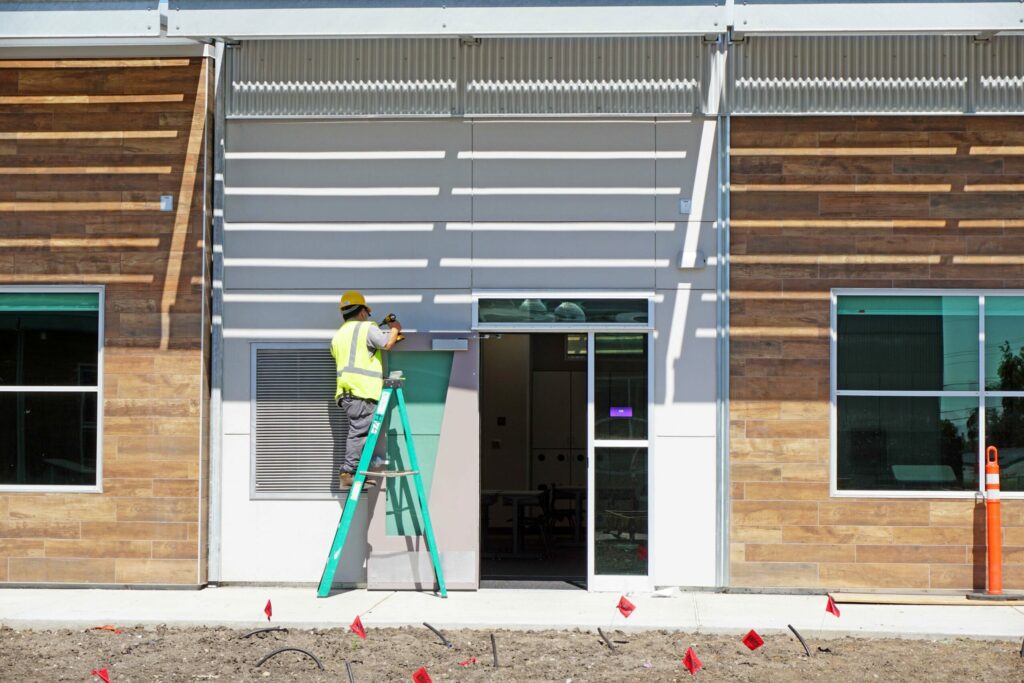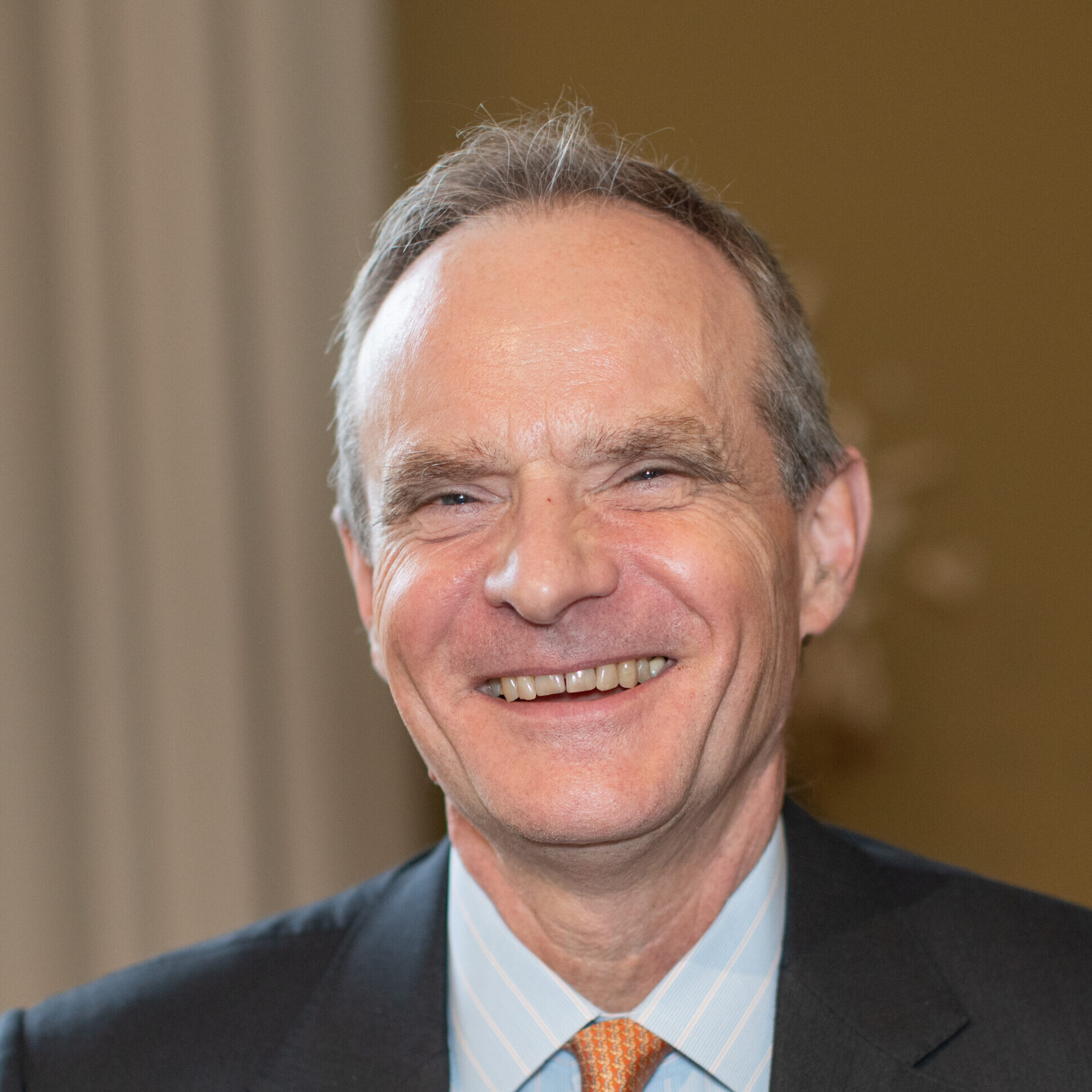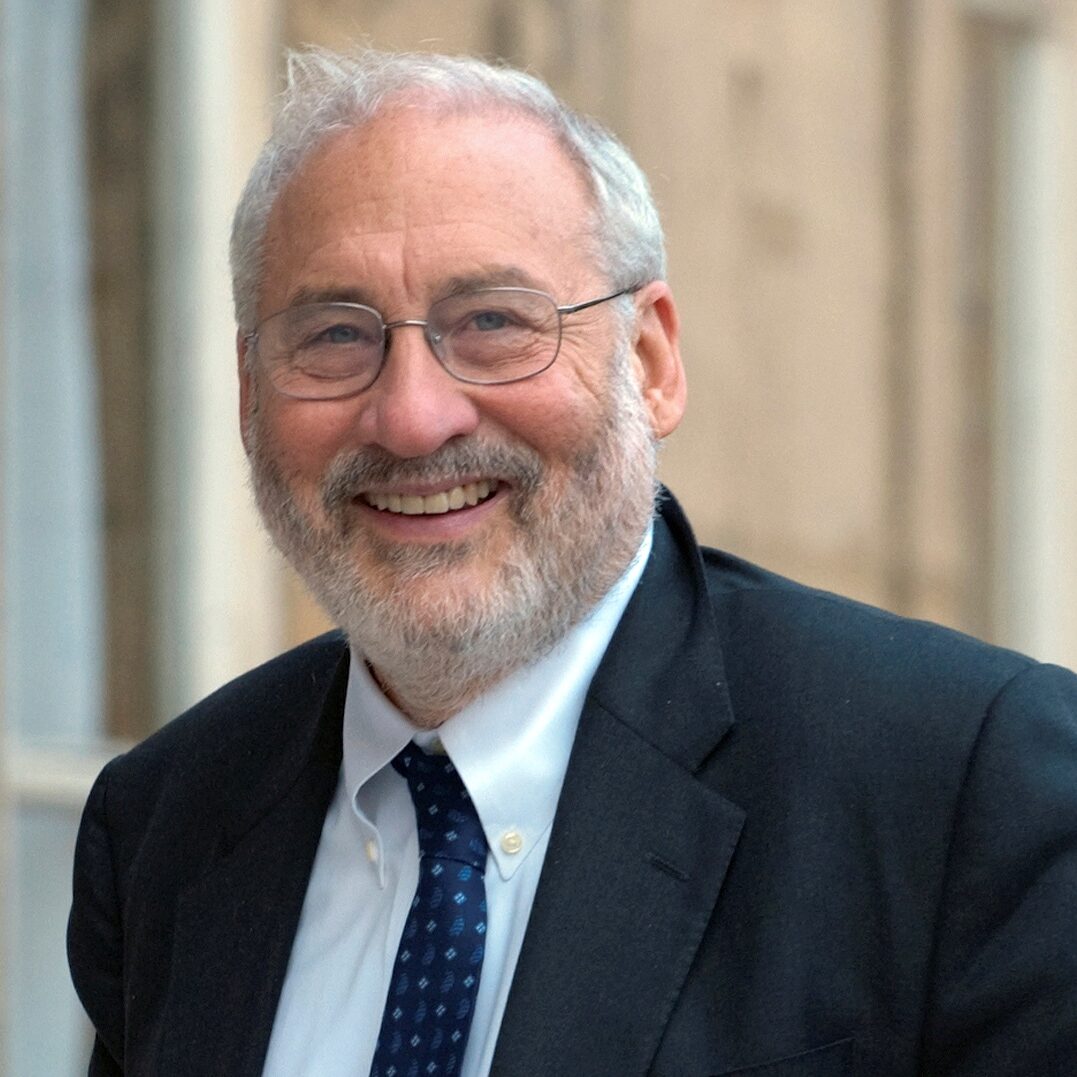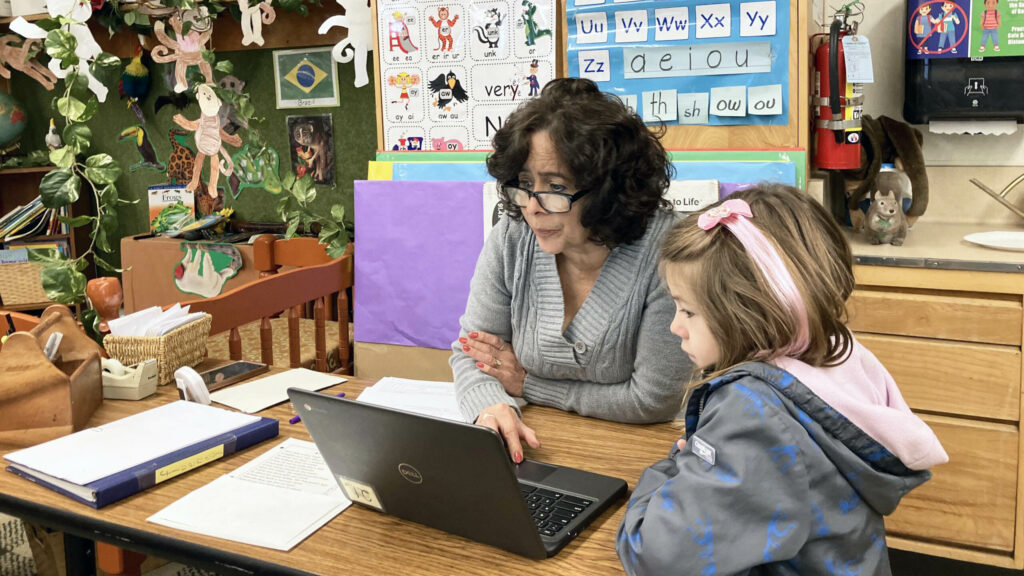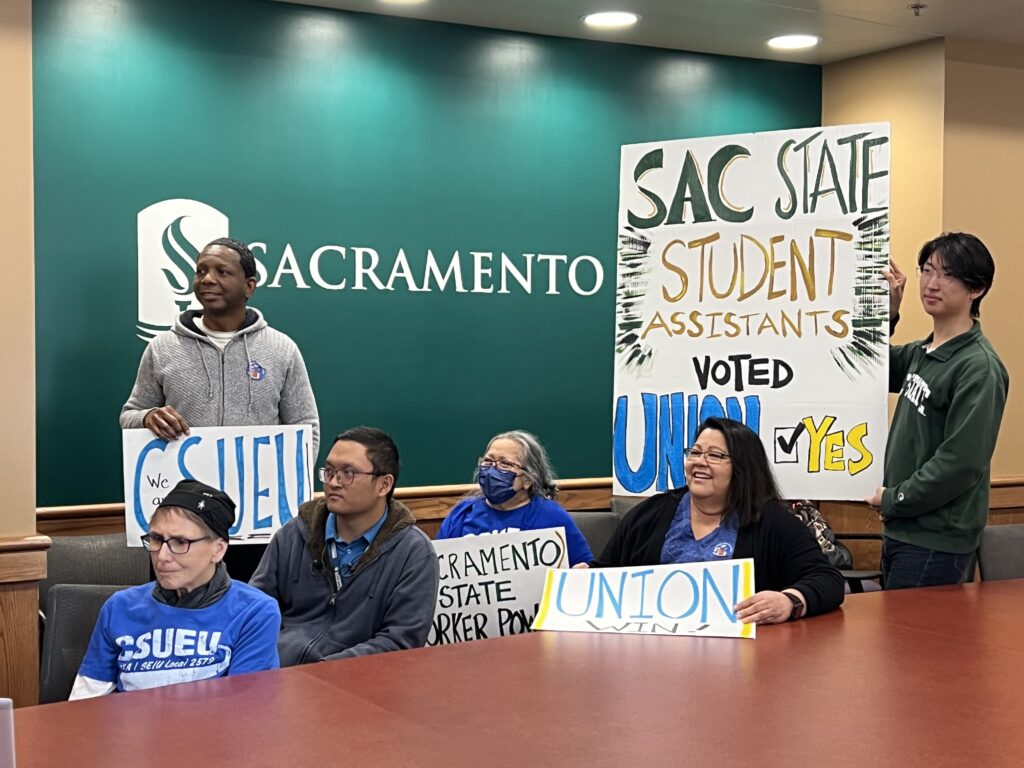
Construction site at Murray Elementary in Dublin Unified in 2022.
Credit: Andrew Reed / EdSource
A public-interest law firm threatened Wednesday to sue Gov. Gavin Newsom and state officials unless they create a fairer system of subsidizing the costs of school facilities. That system must be as equitable as the Local Control Funding Formula, the decade-old formula for funding schools’ operating budgets, Public Advocates demanded in a lengthy letter.
At a news conference announcing their demand, Public Advocates and school board members, superintendents and parents with decrepit, inadequate and unhealthy school buildings charged that the state’s school facilities program discriminates against districts with low property values. Districts with high property values gobble up most of the state’s matching subsidies to modernize schools, while property-poor districts serving low-income families can’t afford local school bonds to qualify for state subsidies to build comparable facilities, they said.
“It is our clear call to get this right,” said Gary Hardie, a school board member in Lynwood Unified in Los Angeles County. “We have not solved our facilities needs — not because we don’t fight each and every day for our young people, but we are up against policies that prevent us from doing the best we can do for our community.”
Hardie is one of four potential plaintiffs in a lawsuit. The others are Building Healthy Communities – Monterey County, Inland Congregations United for Change, and True North Organizing Network, which works with families across Tribal Lands and the broader North Coast region.
In 1971, the California Supreme Court struck down the school funding system based on local property taxes as violating the constitutional right of students in low-wealth districts to have an equal education. In the letter to Newsom, Public Advocates argued the current system of funding school facilities is no better than the property-tax-based system that the court rejected in the Serrano v. Priest decision.
“Study after study has acknowledged the open secret here: Some districts get to build swimming pools and performing arts centers, while others suffer through leaky roofs and black mold,” said John Affeldt, Public Advocates’ managing attorney and director of education equity. Citing a 2022 study by the Public Policy Institute of California, he said that lower-wealth districts have received nearly 60% less state modernization funding than higher-wealth districts since 1998.
“The discriminatory design of the state’s facility funding system is no accident,” he said. “It has been intentionally baked into the system, and its disparate results are wholly foreseeable.”
Hardie, a native of Lynwood, called his city “culturally rich” but under-resourced as a result of federal redlining policies that divided Lynwood’s Black and brown communities with highways that lowered property values.
Lynwood Superintendent Gudiel Crosthwaite said that this week the district of 12,000 students “had about 40 classrooms that were leaking due to the rains, and last year it was a different 60 classrooms.” While other districts are modernizing labs and performing arts theaters, he said Lynwood was forced to demolish the only major auditorium in the city because of the building’s condition. In the district, 99% of students are Black or Hispanic, and 94% are from low-income families.
Going Deeper
 Credit: bike-R on flickr
Credit: bike-R on flickrRead more EdSource coverage about school facilities funding, planning and construction. California school districts rely on state and local bonds and developer fees to fund facilities. As this funding has fluctuated over time, research has found significant disparities in their capacity to keep up facilities that adequately meet students’ needs.
Public Advocates’ 21-page demand letter coincides with the start of negotiations between legislative leaders and the Newsom administration over the size and details of a school facilities bond for the November ballot. Two bills must be reconciled. Assembly Bill 247, by Assemblymember Al Muratsuchi, D-Torrance, calls for a $14 billion TK-12 and community college state bond. Senate Bill 28, by Sen. Steven Glazer, D-Orinda, calls for a $15 billion bond that includes funding for UC and CSU.
Neither bill, at this point, gives a funding breakdown. However, AB 247 includes a possible framework for reform, with a point system that favors low-wealth and low-family income districts with a slightly larger state subsidy. Affeldt, of Public Advocates, dismisses this as inadequate for failing to provide enough funding to address the stark disparities in the current system.
There is little disagreement that a state school bond is needed. Money from the last state school bond, Proposition 51 (2016), with $7 billion in state support for K-12 and $2 billion for community colleges, has been allocated, and about $2 billion in state-approved projects are in the queue for the next round. There is also a demand to remove lead in school water and to shield schools from the impacts of climate change through better air filtration systems, flood protection and heat abatement.
Under the state program, districts pass local bonds through property taxes, and the state matches the money through a state-funded bond issue paid off through state taxes. For new construction, the state splits the cost. For modernization projects — renovating facilities at least 25 years old and portables at least 20 years old — the district pays 40% and the state 60% of a project’s cost.
Public Advocates is calling for addressing only the modernization program, not new construction. Affeldt said that the 60% guarantee for all districts, regardless of their ability to raise far more money than property-poor districts, provides substantially more modernization funds per pupil to higher-wealth districts.
The current facility program also includes a hardship program for small districts with so little assessed property that they can’t afford a school bond. However, the current qualifying criteria — a maximum of $5 million of assessed value — are strict and don’t account for the high construction costs in remote areas. AB 247 would raise the limit to $15 billion.
Between 1998 and 2016, the state provided $42 billion of the $166 billion that school districts raised for new construction and modernization, according to a report by Jeff Vincent, who co-directs the Center for Cities + Schools at UC Berkeley and has done extensive research into the school facility program and its disparities.
Spokespersons for Newsom and Muratsuchi did not respond Wednesday to a request for comment.
Long-standing complaints
The issues raised by Public Advocates are not new.
In 2016, then-Gov. Jerry Brown called for major changes in the facilities program, and opposed the measure when school districts and construction lobbies wouldn’t compromise. Brown wanted to concentrate state aid on low-income, low-property-wealth districts and end the first-come, first-served basis for allocating state matches, which he said favored wealthy and big districts, like Los Angeles Unified, with large facilities planners that can quickly apply. Voters passed the $9 billion Proposition 51 ($7 billion for K-12 schools and $2 billion for community colleges) anyway.
In 2018, Vincent co-authored a study that documented the disparities among districts’ ability to raise money through local bonds. He found that districts with the most assessed property value raised more than triple the amount of bond revenue per student than districts with the least assessed value per student.
With calls for reform escalating, Newsom took up the cause in negotiating a $15 million bond for the March 2020 ballot. The down-to-the-wire talks led to concessions. Instead of first-come, first-served, the bond issue set priorities for state funding. They started with districts facing critical health and safety issues, like mold in schools or seismic hazards, small districts facing financial hardship, schools needing lead abatement, and districts facing overcrowding.
The agreement also established a ranking system that factored in school districts’ ability to fund construction, as measured by bonding capacity per student and the percentage of students who are low-income, fosters, homeless, and English learners — the same measure for extra state money under the Local Control Funding Formula. Based on their point total, districts could qualify for a bonus 1% to 5% of state funding above the 60% match for modernization and 50% match for new construction.
The changes were not implemented after voters rejected the bond issue 47% to 53%. It was the first defeat of a statewide school bond in more than 40 years. Some attributed the loss to anxiety over Covid, whose infections were making the news; others blamed its unfortunate but coincidental title —Proposition 13 — and confusion with the 1978 tax-cutting initiative.
In September 2020, after Newsom and school districts reached a deal on what would become Proposition 13, Vincent told EdSource, “State leaders took the much-needed first step in putting forth a new program and a new wealth-adjusted funding formula. However, providing poor districts with a few more percentage points of funding may not remedy the inequities we’ve seen. It will be important to watch things closely in coming years.”
Public Advocates and the complainants say now is the time for the much-needed second step.
If negotiations fail, a lawsuit in the fall could complicate the chances of passage, if not derail, a bond measure in November. Knowing that, Affeldt said, “I hope that the serious threat of litigation and negative publicity that will come with that will make all of the players realize that we need a more aggressive overhaul of the system.”
